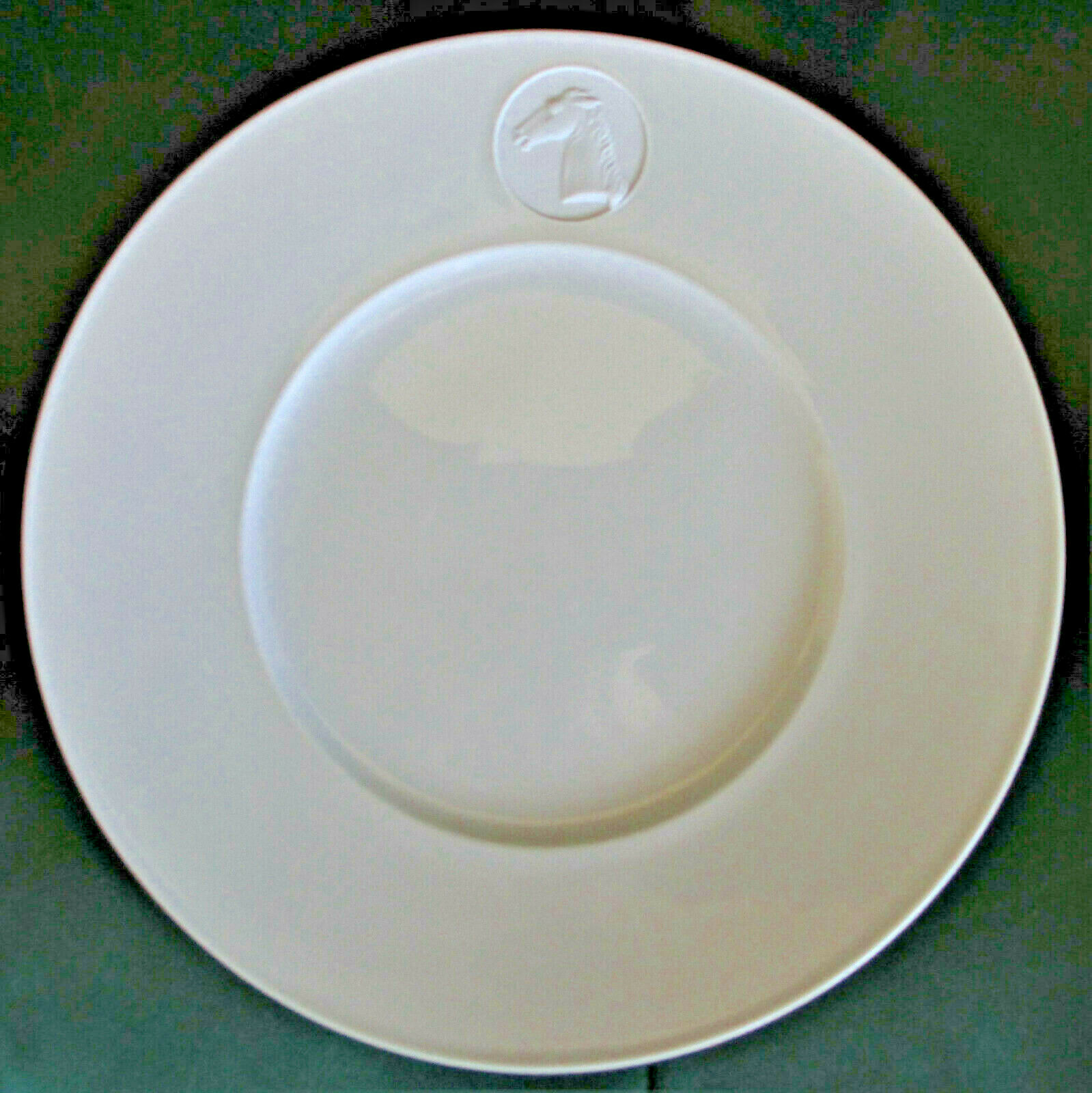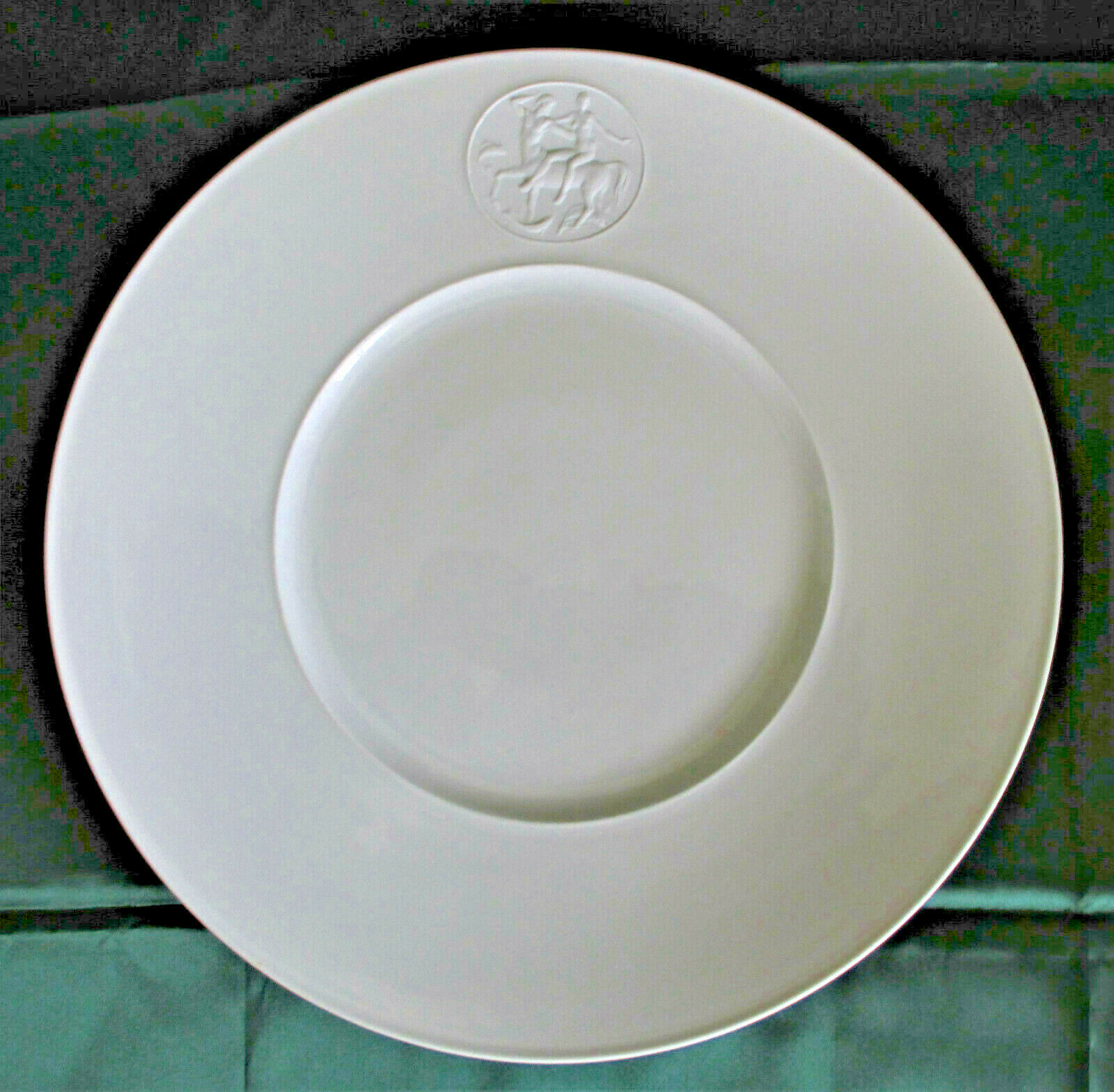-40%
VINTAGE KPM Royal Ivory RIVIERA Dish Set CUSTOM for CAROL LOT of 12 PIECES
$ 118.8
- Description
- Size Guide
Description
LOT OF 12 Pieces of KPM for Carol. Lot is as follows:-sugar bowl (1)
-creamer(1)
-bread butter plate (5)
-dinner plate (4)
-covered cassarole(1)
Estate vintage KPM Royal Ivory covered
casserole
dish in the Riviera pattern. Measures 10.5" wide from handle to handle, stands about 3" tall uncovered, and is about 2.5" deep. Stamped. Excellent condition. Stored carefully for many years. I have more pieces I will be listing. See my other listings.
Riviera
by ROYAL IVORY (CZECH, GERMANY)
Description: Pink Roses W/ Multifloral, Gold Trim
Pattern: Riviera by Royal Ivory (Czech, Germany)
KPM, a hugely successful porcelain manufacturer that has been in business for more than 250 years, has specialized in the production of high-quality decorative art. Because of its long history, there are many KPM porcelain objects available in the market today that reflect the stylistic shifts and cultural influences that drove the company’s long history of craftsmanship. These works are also valued for their ties to Prussian royalty and the German state, as well as their strong emphasis on quality and handmade design.
Dr. Ingrid Gilgenmann, a decorative art specialist at German auction house Lempertz, says, “Over the last 100 years, KPM has specialized in modern shapes; very good designers. The results are attractive classic vessel shapes that are easy to recognize, and unusual colors.”
The History of KPM Porcelain
KPM is an acronym for Königliche Porzellan-Manufaktur Berlin, which translates to “Royal Porcelain Factory in Berlin.” The company was founded in 1763 by Frederick II of Prussia, who bought the factory from its previous owner, Johann Ernst Gotzkowsky, in the wake of its bankruptcy. Frederick II greatly admired the factory’s “white gold,” a type of porcelain so fine and translucent that it closely mirrored the high-quality porcelain made in China. He invested large sums of money into the company and granted it the use of the royal scepter as its emblem. He also commissioned many KPM porcelain objects to be made in the Rococo style for his palace.
Royal Beginnings
From the company’s founding in 1763 to the abdication of Emperor William II in 1918, KPM was owned by seven kings and emperors. KPM porcelain made during this period reflects not only the fashions of the time but also Prussian royal taste. Technological advances during the 1860s led to increasingly modern modes of production and design, but even so, KPM continued to value craftsmanship, and KPM artists devoted time and care to produce unique, handmade objects.
The German state began running the company in 1918, upholding its traditions and overseeing the production of contemporary wares and figurines. In 2006, Berlin banker Jorg Woltmann assumed full control of KPM as its sole shareholder, effectively privatizing the historic company. Since then, KPM sales galleries have opened across Germany, and the international market for KPM porcelain has flourished.
KPM Porcelain Styles
Rococo (Early to Mid-18th Century)
Rococo’s name is derived from the French word “rocaille,” meaning “shell” or “rock.” The Rococo aesthetic first became popular in France during the early to mid-18th century, during which there was a push toward asymmetrical, free-flowing designs. Frederick II was a great admirer of the style and commissioned many KPM works for the purpose of displaying them in his palace. In particular, he required KPM artists to make dinner sets matching his extravagant interiors, and he also gave dinner sets as diplomatic gifts.
Neoclassical (Late 18th Century)
During the late 18th century, under the direction Frederick William II, KPM artists revelled in the stylistic changes that emerged with the Neoclassical movement. Inspired by recent discoveries of ancient Greek, Roman, and Egyptian artifacts, Neoclassical porcelain is inspired by classicizing designs and “pure forms.” Vases in particular were prized for their visual connection to ancient pottery; however, KPM artists also took full advantage of Neoclassical developments in painting, applying highly detailed landscapes, townscapes, and seascapes to porcelain objects.
Art Nouveau (19th Century)
Throughout the 19th century, KPM created new and fashionable designs while continuing to produce popular Rococo and Neoclassical pieces. By this time, the royally-funded company was well known across Europe and collected by the social elite. In 1878, KPM opened the Chemical-Technical Institute, devoted to the study of porcelain. This allowed KPM artists to create innovative works using new glazes and colors. These technological developments coincided with the emerging Art Nouveau (“New Art”) style, which prized handmade artisanship and organic yet luxurious forms. Gilgenmann says, “Many manufactories no longer know how they painted and gilded at the end of the 19th century – the glazes were so experimental.”
Bauhaus (20th Century)
During the early 20th century, the Bauhaus style greatly impacted the production of KPM porcelain. This style, which translates to “school of building,” emphasized the importance of the artistic (“building”) process and favored well-made but simplified forms. KPM artists adapted their objects to reflect these changes, creating dinner services with smooth, polished surfaces, functional forms, and minimal decoration. In contrast to Rococo, Neoclassical, and Art Nouveau pieces, Bauhaus porcelain appears pared down and minimalist.
KPM Porcelain Marks
From the company’s founding in 1763, the company has used a number of key markings and symbols on the bottom of a porcelain piece. Today, these markings help specialists identify specific periods within the company’s history. Explore the timeline below to see how KPM porcelain marks evolved over time.
kpm porcelain marks
From 1962 forward, KPM marks became more modern, often depicting the letters “KPM” and the place name indicating where the object was made. For example, a piece made in Berlin in the 1980s might have the following mark: “ROYAL PORZELLAN KPM GERMANY.”
KPM Porcelain Marks: What to Look For
When it comes to determining whether or not a piece is authentic KPM porcelain, Gilgenmann recommends that collectors consult with a specialist. She notes that the easiest way to counterfeit KPM porcelain is to copy the mark, so it’s especially important for collectors to know what to look for. “Take any porcelain and paint a mark on it. The unsuspecting buyer will believe it,” she says.
“One should think that the KPM mark is easy to forge, because like in 1763, the year it was founded, it only shows the scepter of Frederick II. This is a vertical stroke, two oblique small strokes at the top for the indicated crown, a thickening for the handle and a dot for the pommel. When the manufactory’s production increased around 1780, the mark became more and more sloppy.”
But, Gilgenmann points out, with a trained eye, a reproduction is easy to spot. “Believe me, I’ve never seen a really good fake mark before. If someone specializes in forging marks, [decorative art specialists] will find out immediately.”
Detail of KPM porcelain mark on the bottom of the writing set of Frederick William IV, around 1840-1860. .
KPM continues to thrive, creating Rococo objects inspired by Frederick II’s reign, state-of-the-art contemporary pieces fashioned by today’s leading designers, and everything in between. The company’s prestigious origins, vivid history, and high-quality techniques have contributed to its incredible success, making KPM — along with Meissen, Sevres, and Wedgwood — one of Europe’s leading porcelain manufacturers.
On the art of collecting KPM, Gilgenmann urges collectors “to get involved with the objects when they catch your eye, attract your interest.” She adds, “You never know what will become of it; where the object will take you.”









